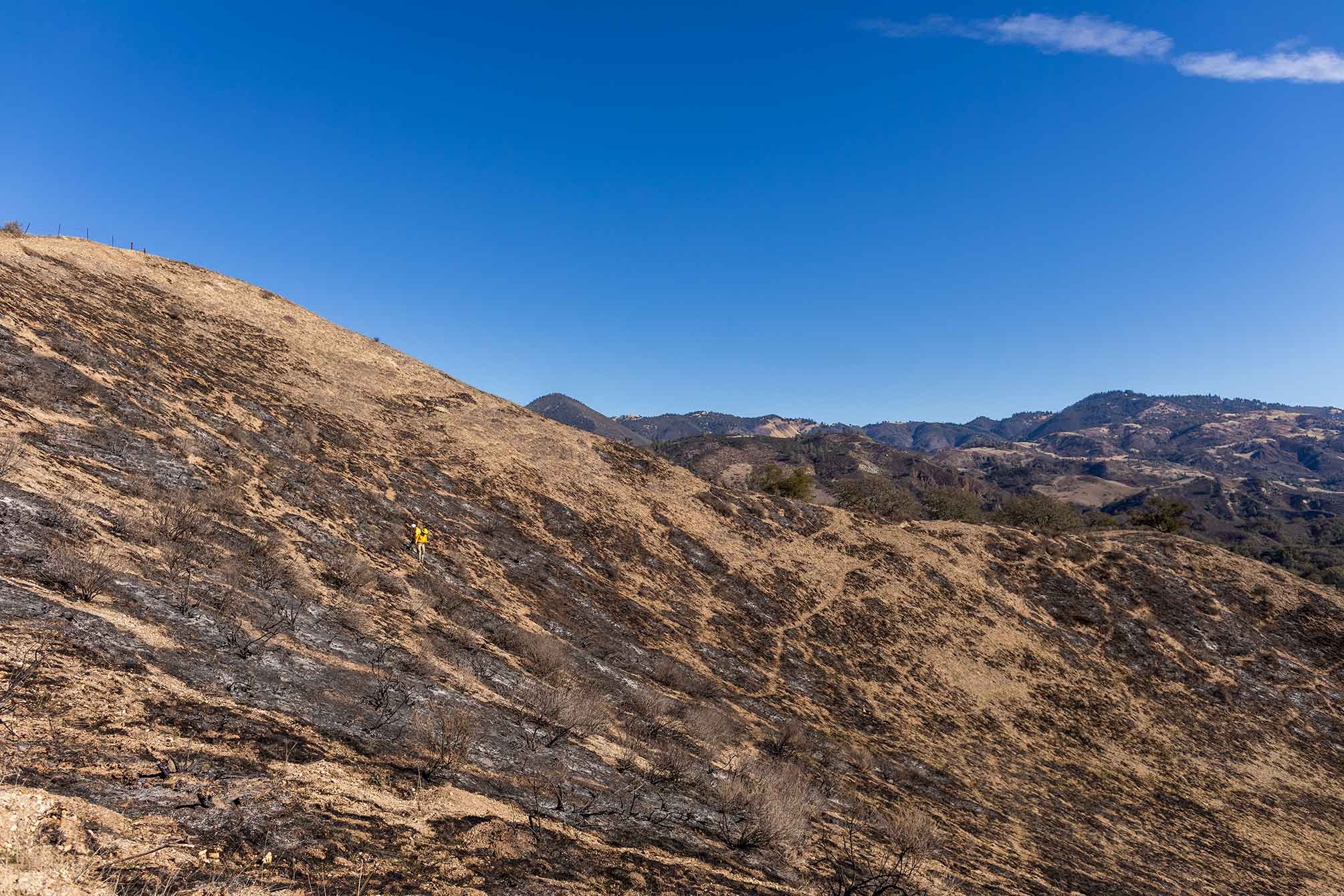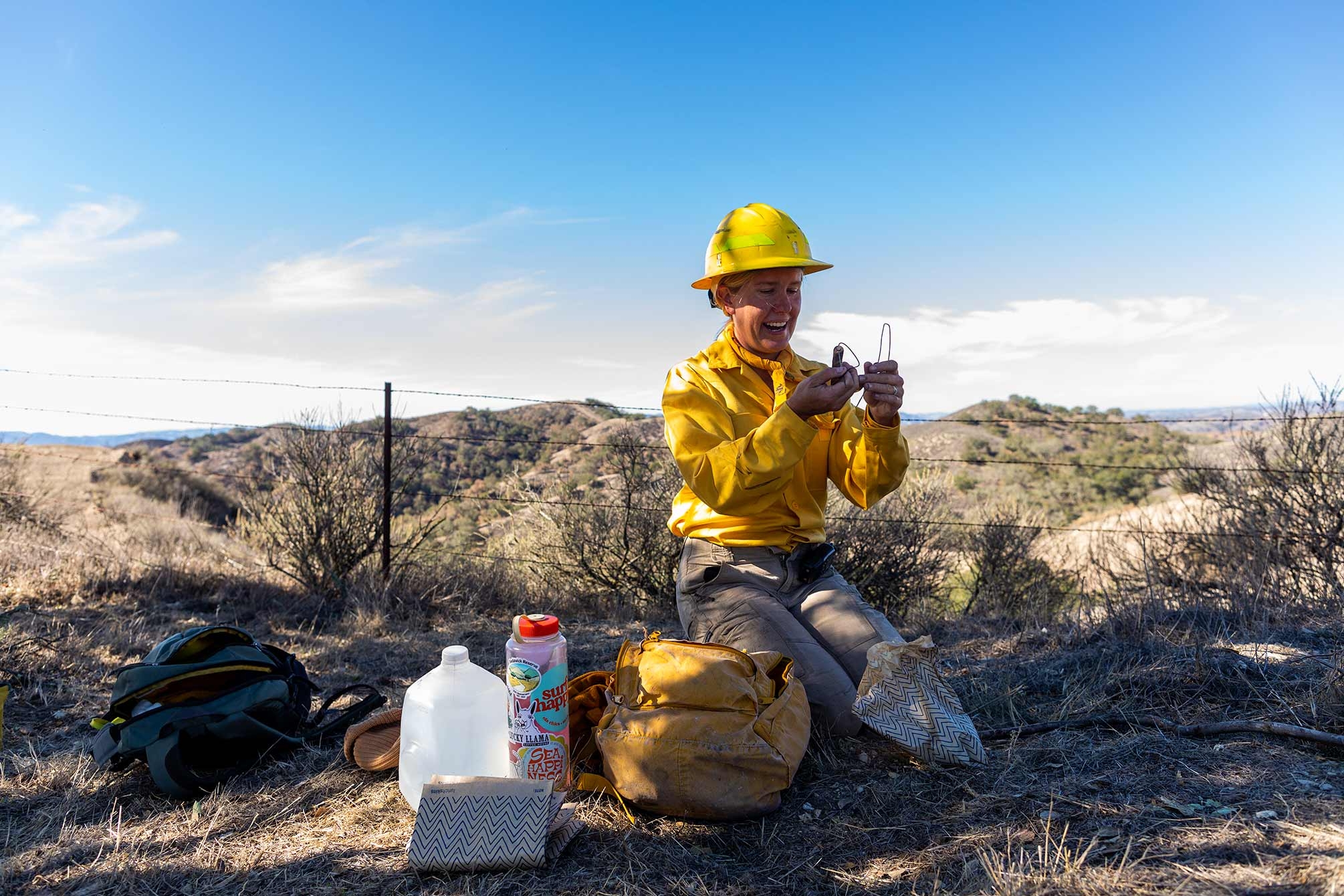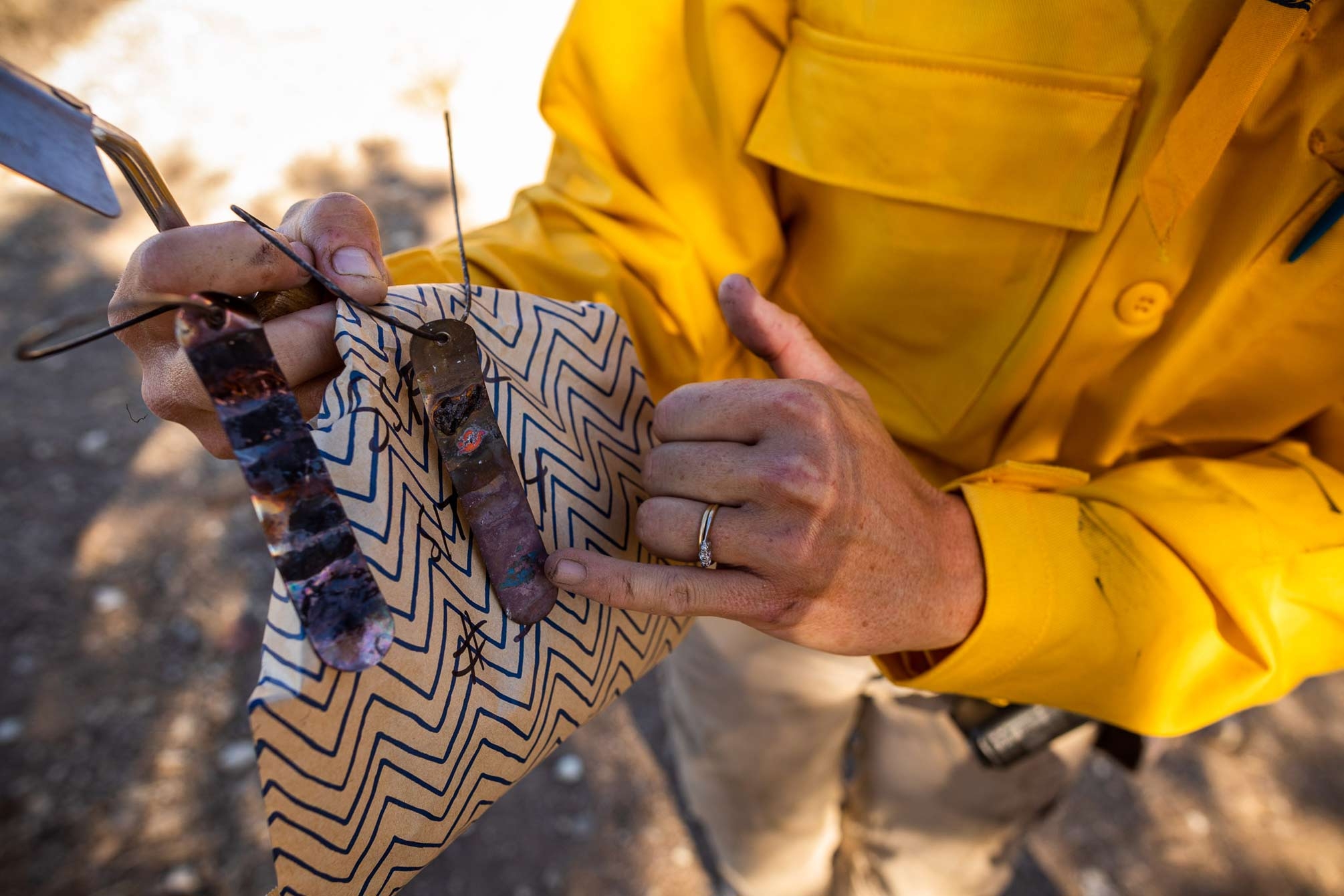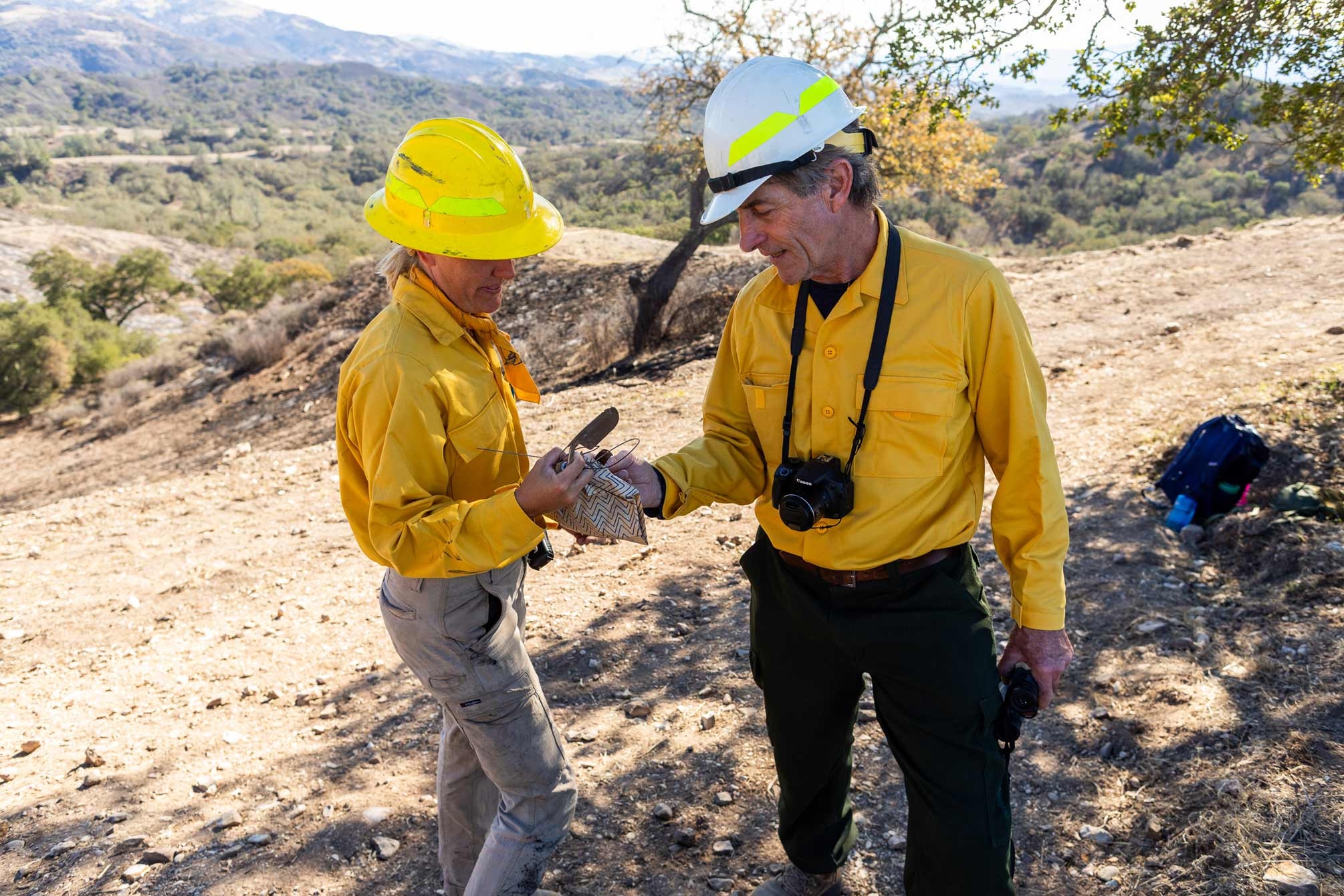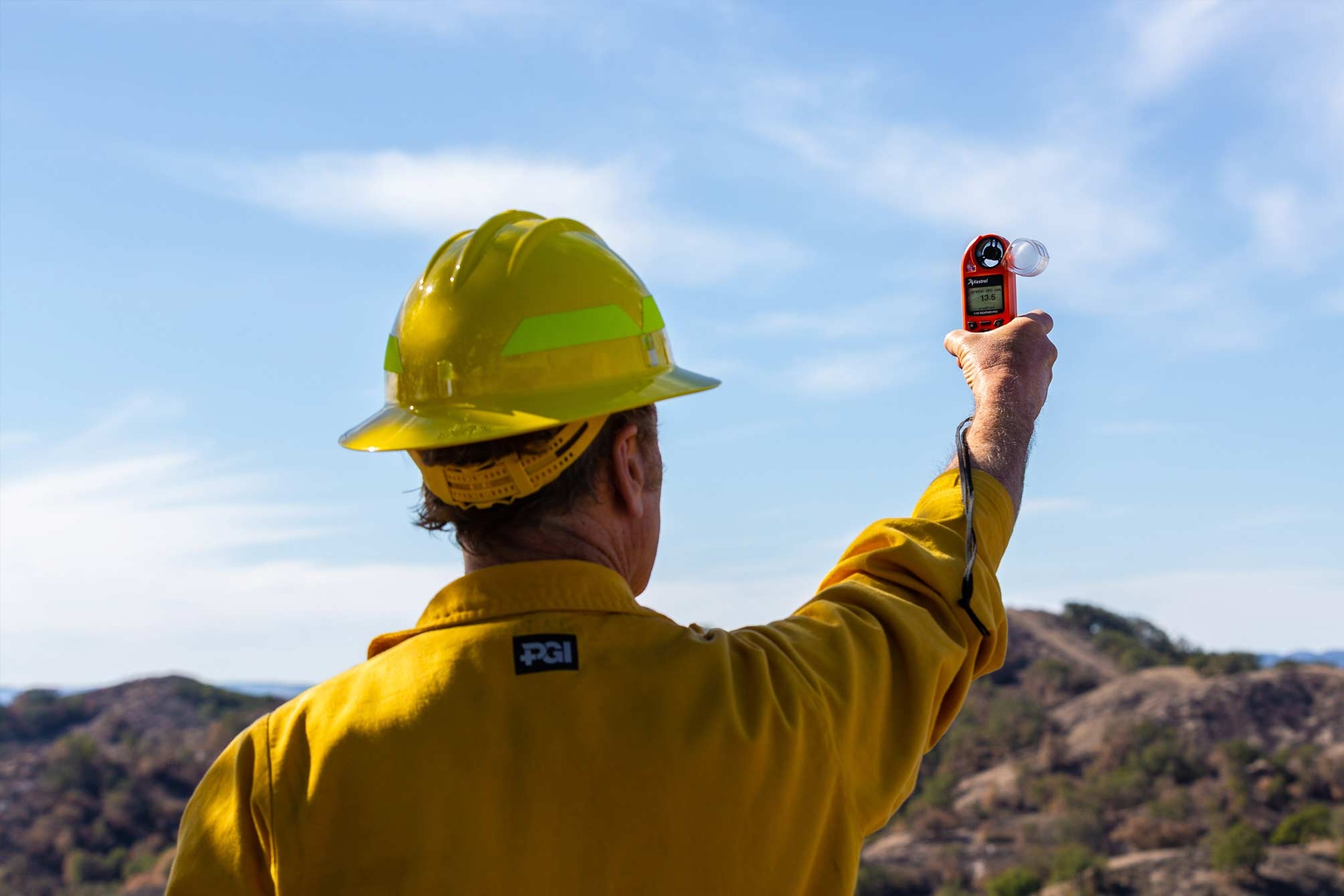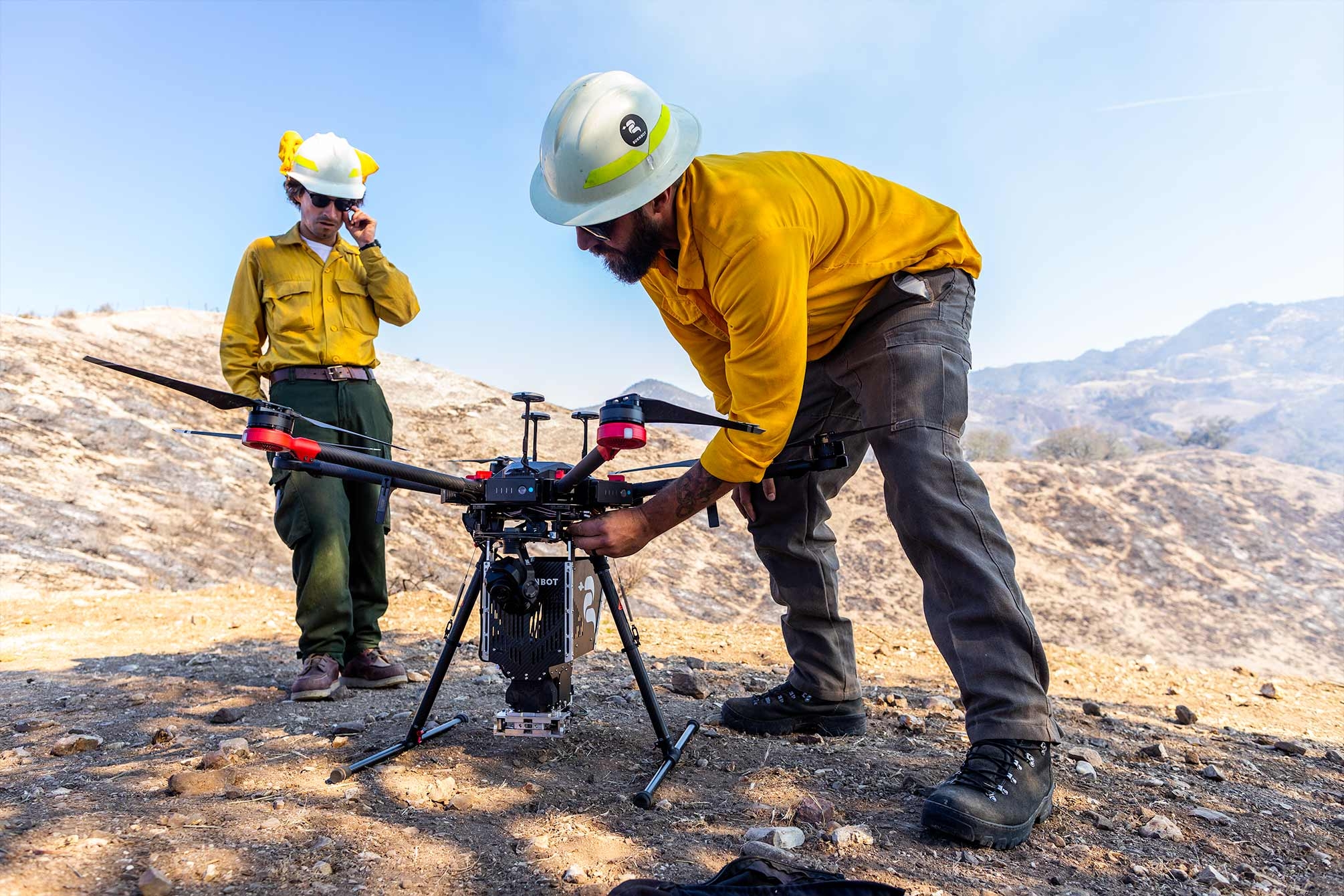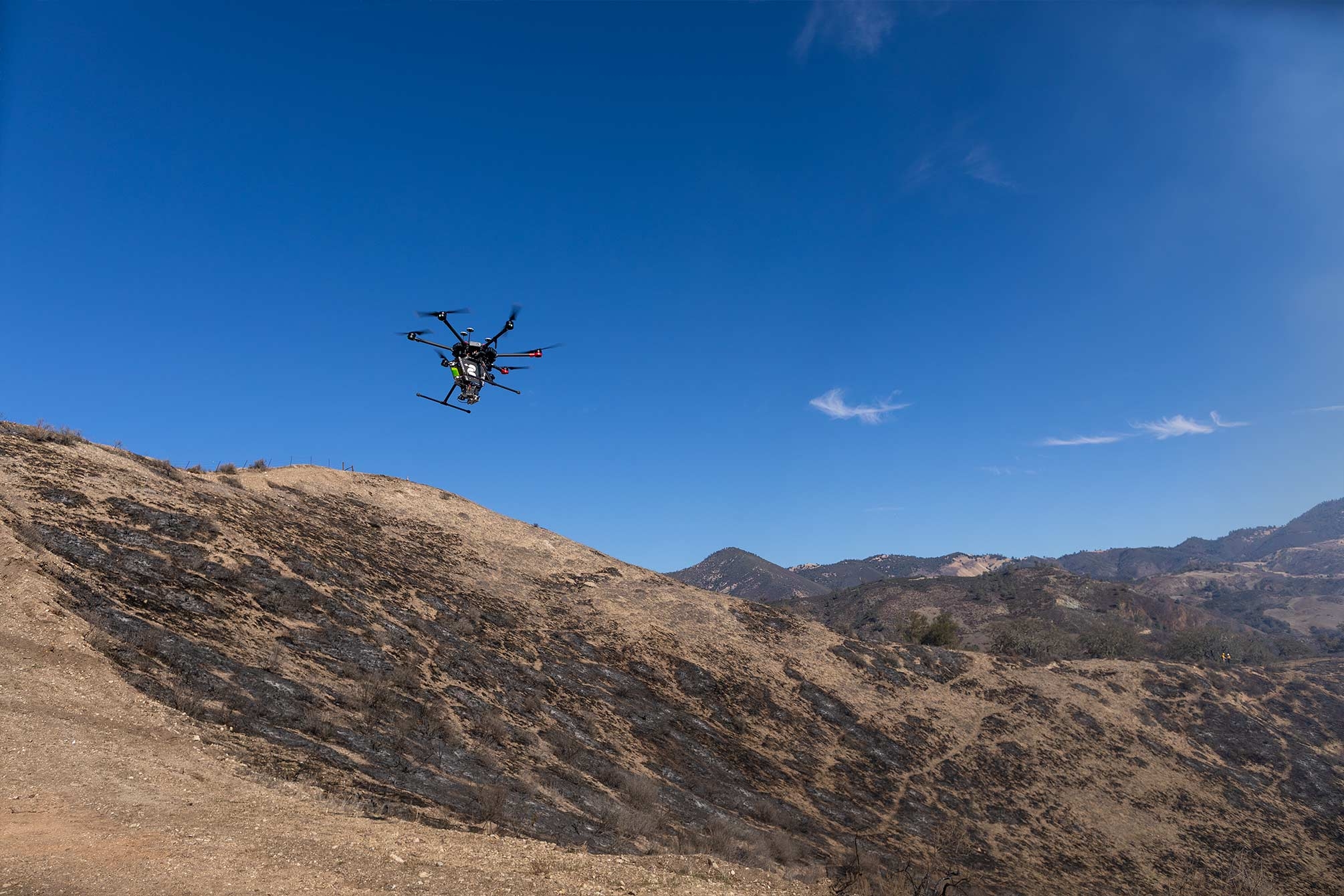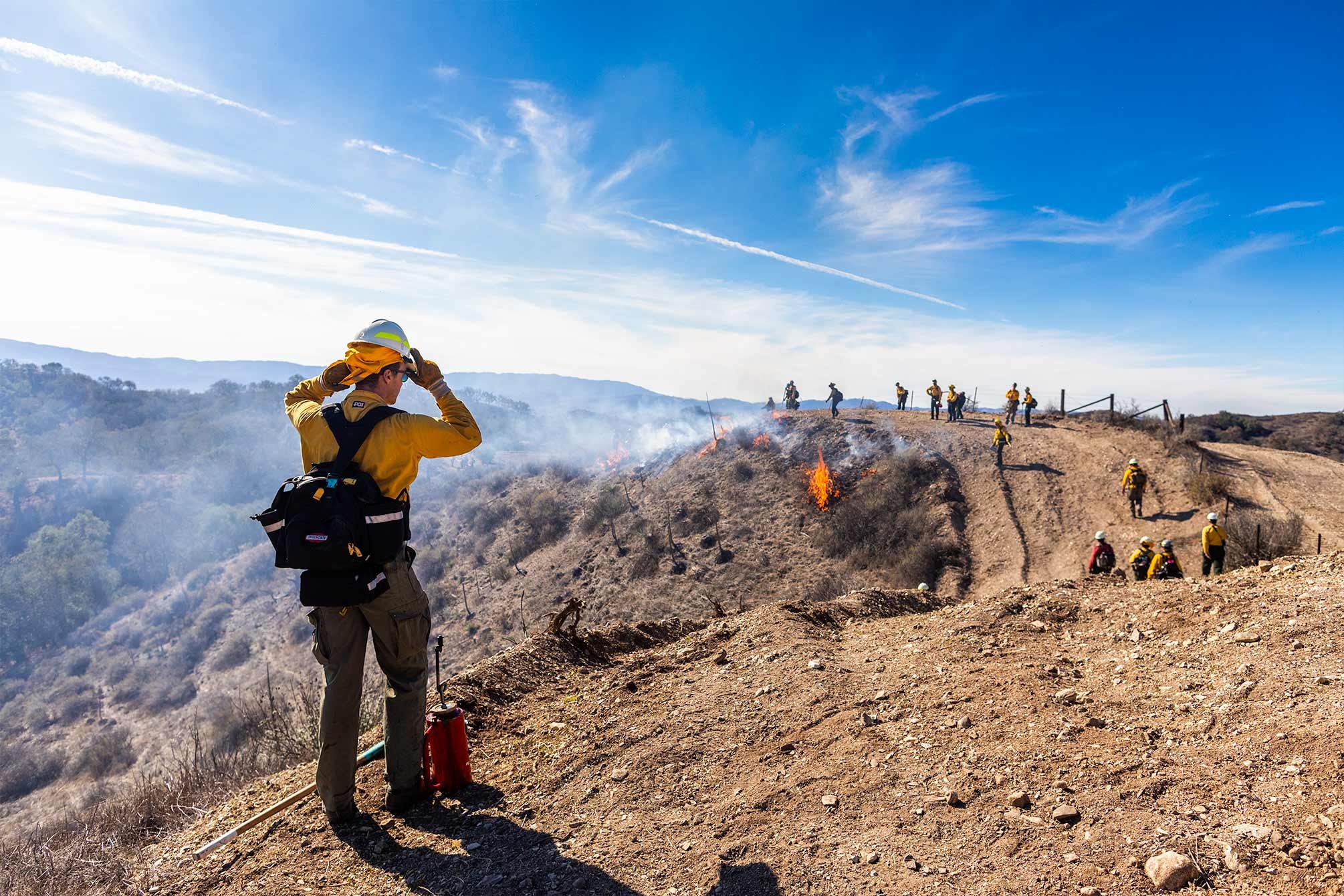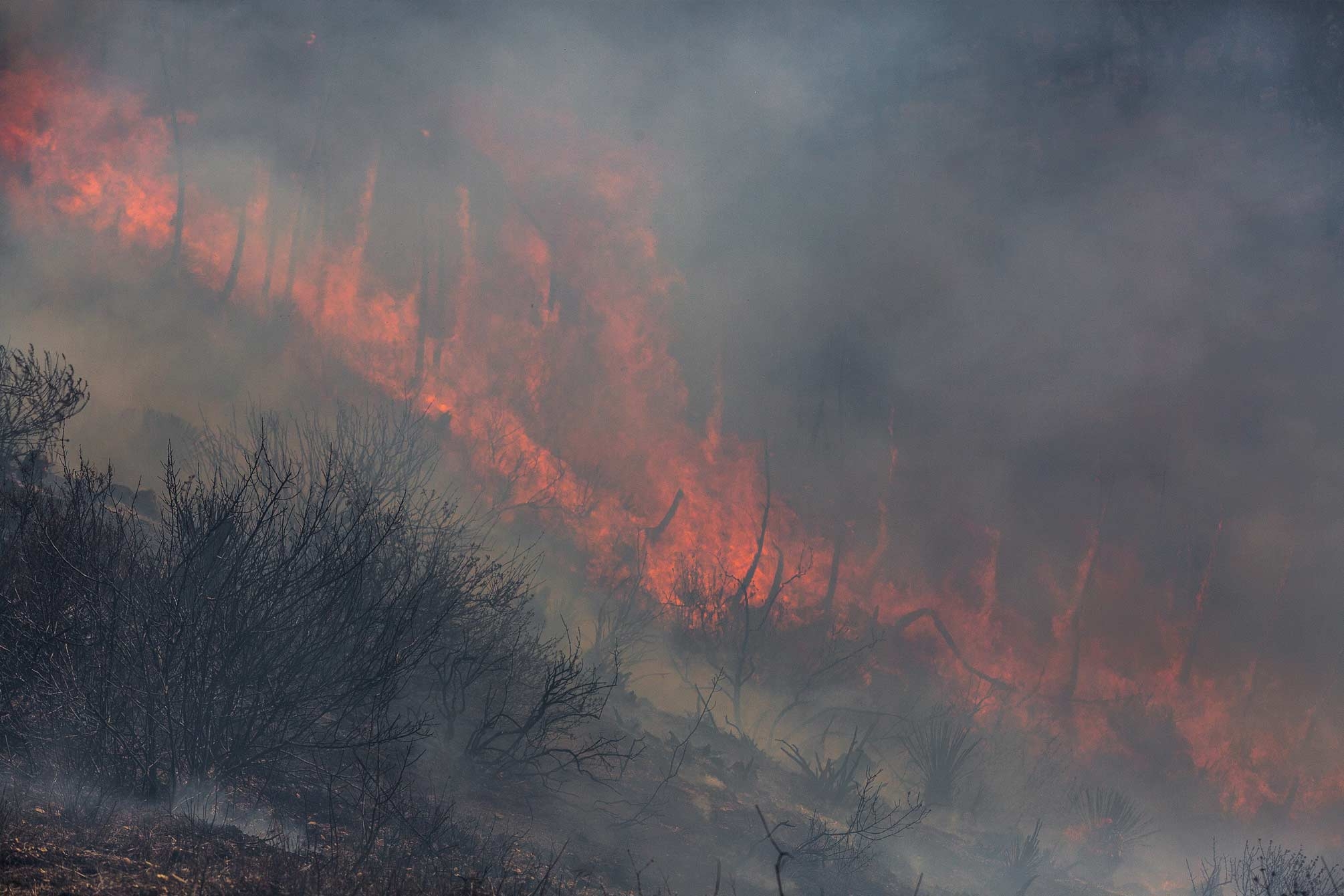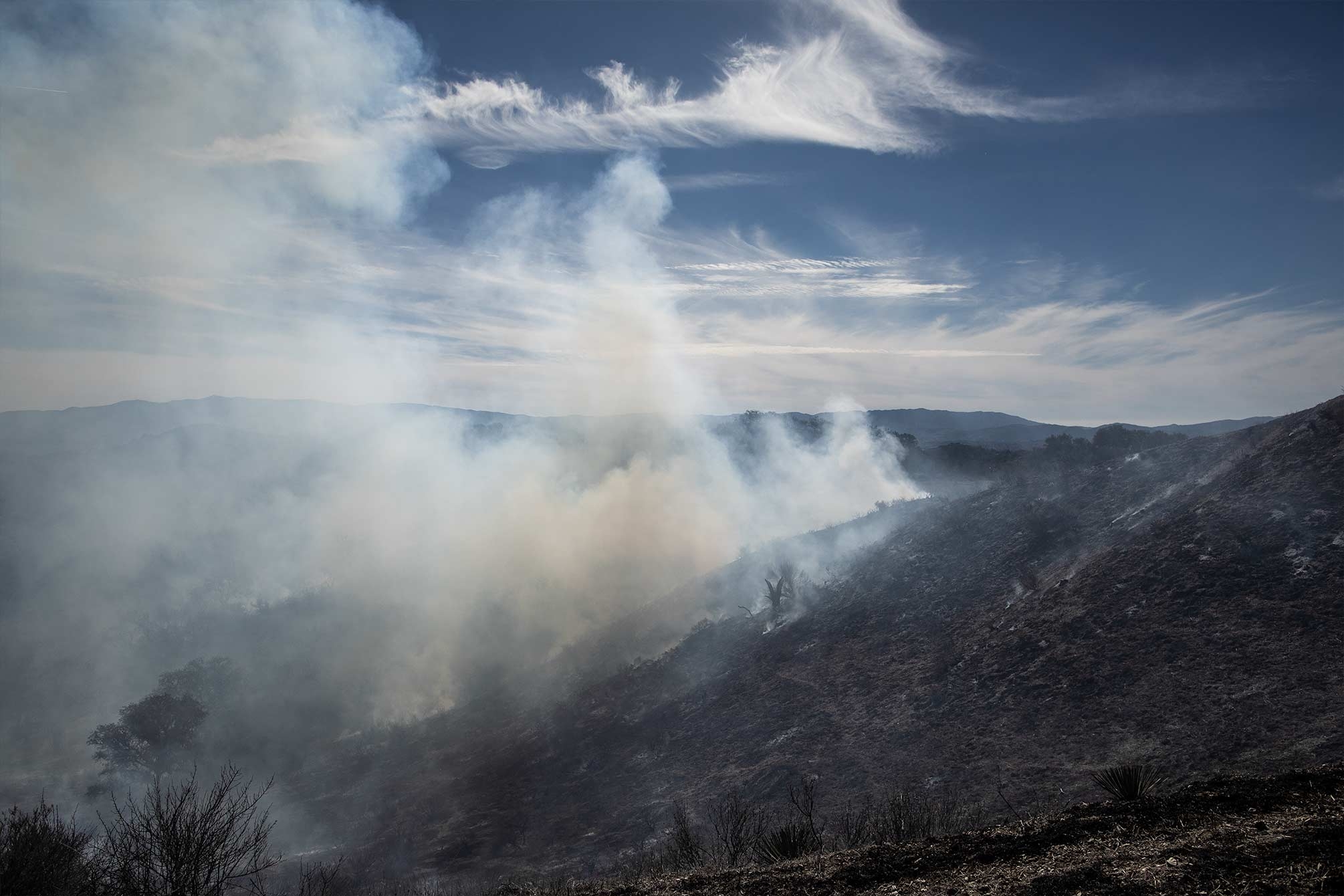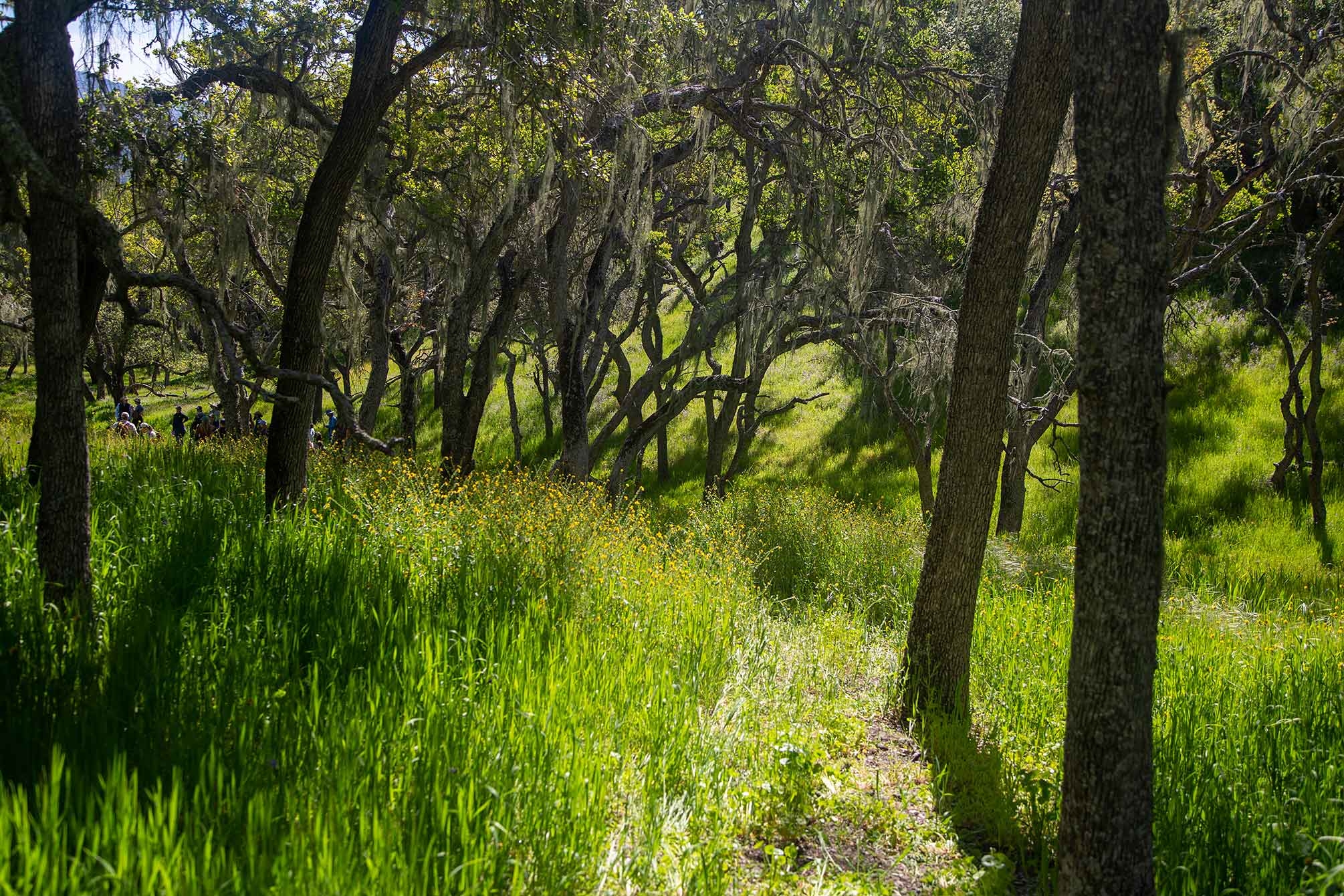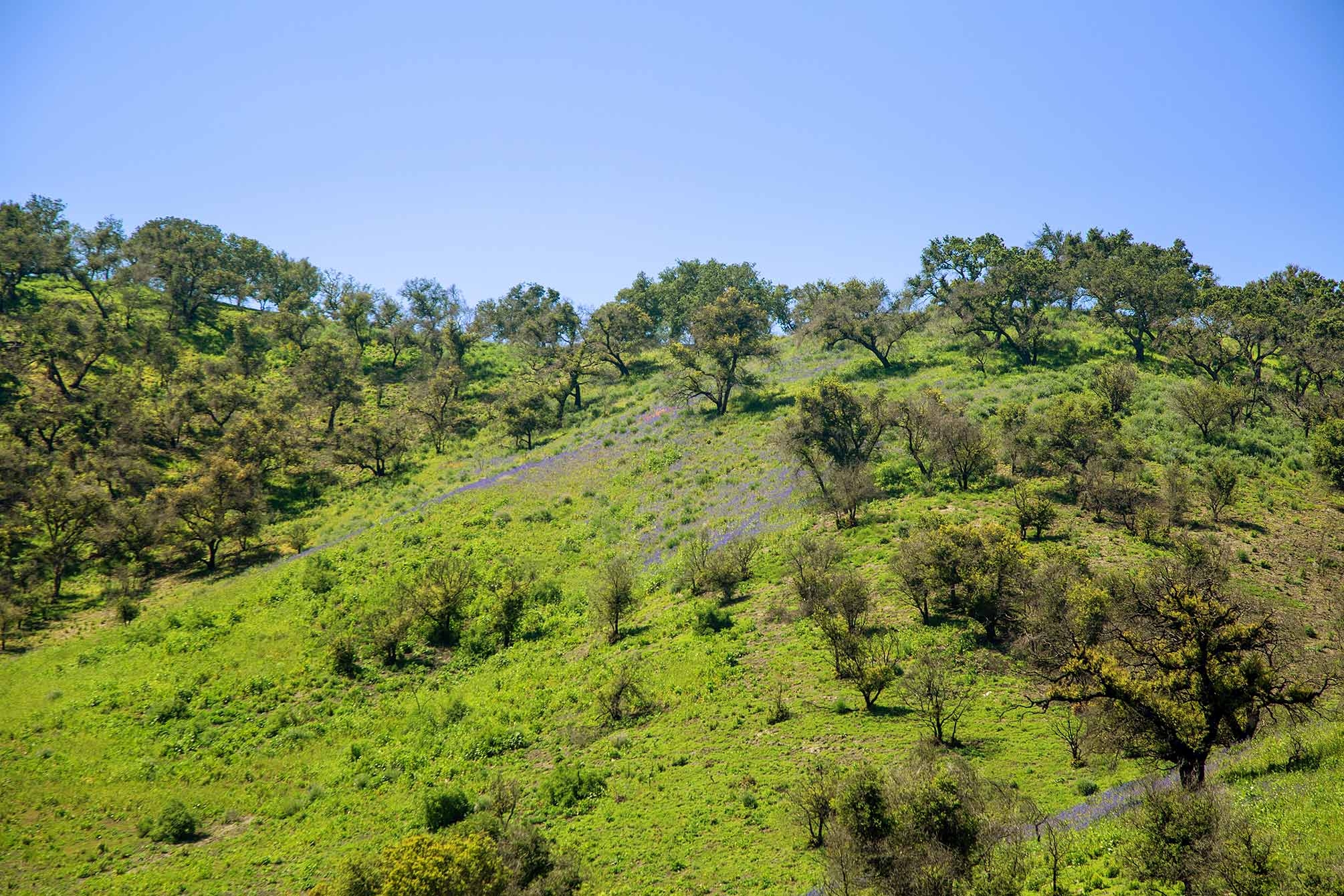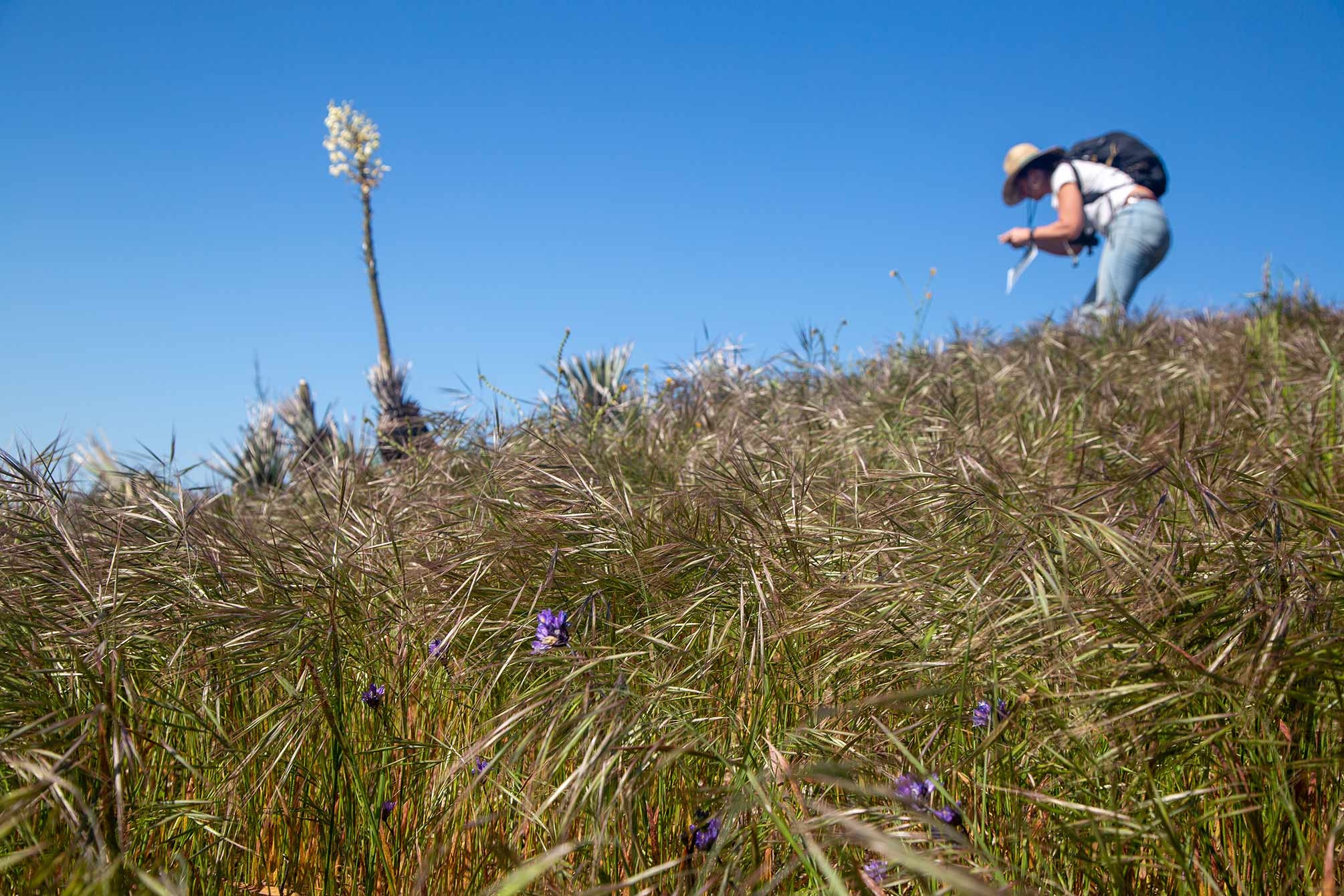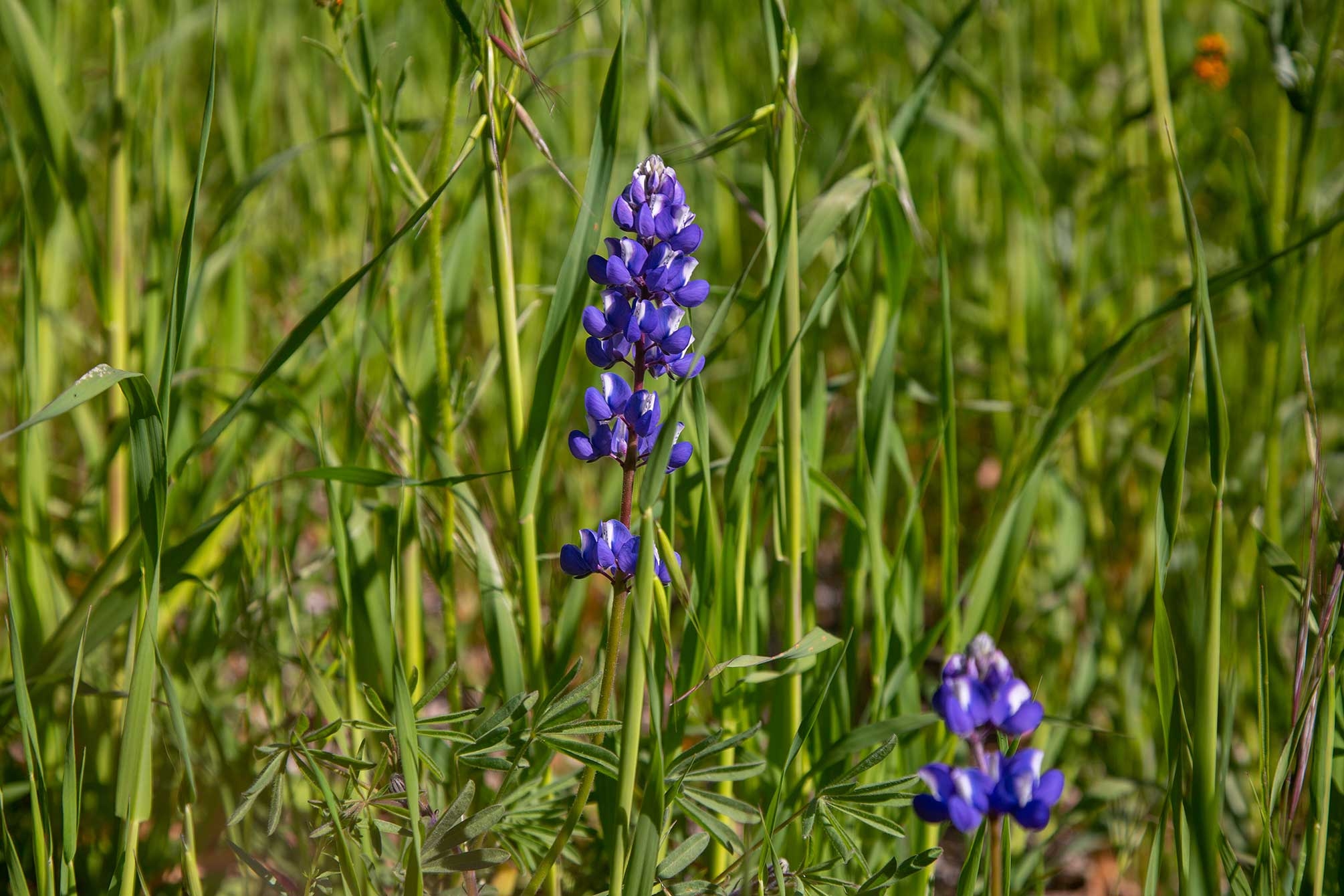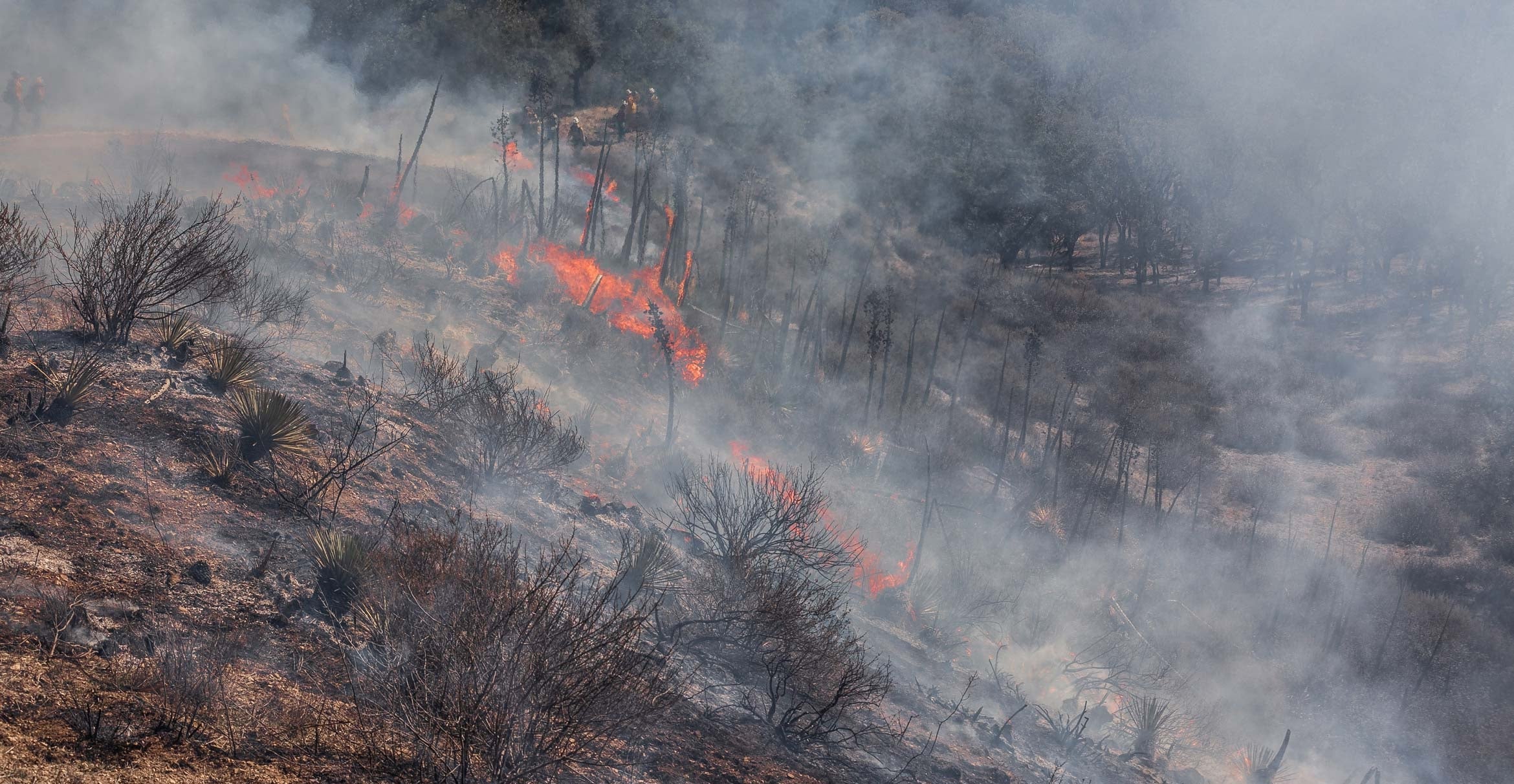
Flames torched the hillside, igniting the dry chaparral at Sedgwick Reserve in California’s Santa Ynez Valley. Sagebrush and yucca caught fire like tinder as the flame front advanced, leaving charred snags and smoldering yucca stumps in its wake.
Dozens of professionals hurried about, clad in Nomex gear with hoses and water trucks at the ready. However instead of nozzles, their gloves gripped drip torches with flames flickering at the ends of the spouts. They had lit the fire that now consumed the hillside, and they labored on to ensure it would spread.
Resource managers are increasingly turning toward prescribed burns as a tool to maintain and restore landscapes and reduce the risk of wildfires. The technique stretches back thousands of years to the native peoples of North America. European Americans began to suppress the practice and, for more than a century, every spark and ember was aggressively extinguished. But now scientists and land stewards are beginning to understand the nuances of fire in the American West, and how we can put it to good use.
Planned to a T
Phil Dye, the “burn boss,” convened the crew for a morning briefing. This would be the second burn at the reserve during a weeklong prescribed fire training exchange (TREX) run by the Nature Conservancy. Around 50 participants gathered to review logistics and hourly weather forecasts, crucial info for a successful burn. However, planning had begun long before this with analysis of local geography, weather forecasts and the area’s recent history.
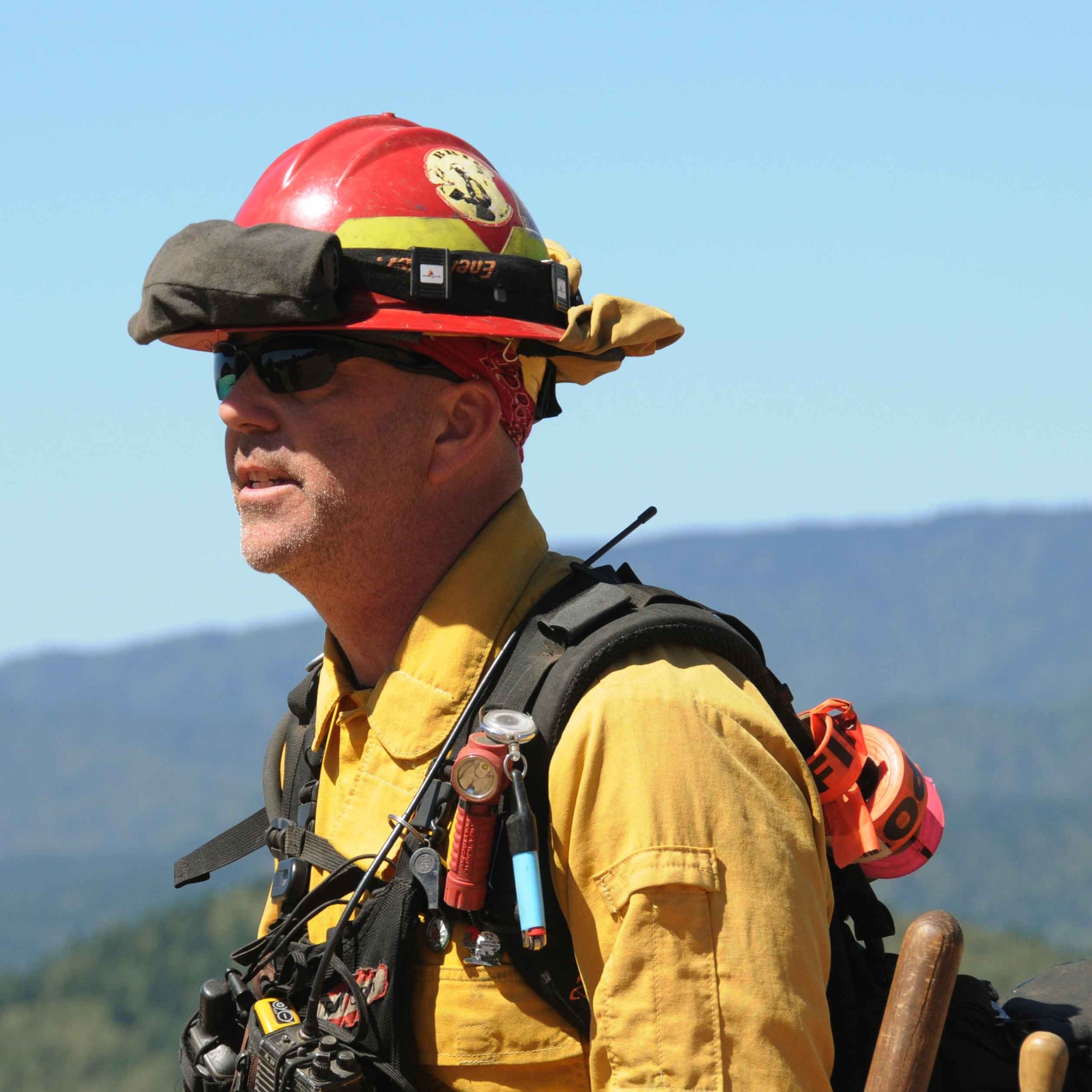
“Implementing a prescribed fire is a lot like painting a room: It’s about 90% prep work,” said Dye, a retired fire captain who transitioned into a career as a prescribed fire specialist. As a contract burn boss, he starts planning events months, even a year in advance. The long lead time enables him to discuss objectives, visit the site and write a burn plan, which can exceed 100 pages. It covers everything that a burn boss would need to know in order to put fire on the ground.
The burn plan also defines the conditions under which a prescribed fire will take place. This “burn prescription” covers factors like the wind, temperature and humidity ranges under which the burn can go forward. It also involves simulating the fire. “We aren’t just hoping that the fire behaves the way we want it to,” Dye said, “we’ve actually modeled it ahead of time.”
That’s why the burn plan isn’t merely a set of recommendations. Burning out of prescription raises the risks that something goes wrong, which could endanger life, land and property. A burn boss could even be held liable for negligence if the burn goes awry because they didn’t follow the plan.
Hence the morning briefing, which informs the crew where conditions fall within the prescription range, so they can adjust their strategies and activities accordingly. After grabbing some lunch from the mess hall, it’s off to the site.
Why put down fire?
It seems like California has no shortage of fires. So why intentionally light more?
When employed carefully, fire can be an incredibly versatile tool. The native tribes of California have used fire for millennia to promote a patchwork of ecosystems that supports a diversity of useful plants and animals. Today’s experts and professionals are rediscovering prescribed fire as a way to both encourage native growth and manage fuel loads, preventing firestorms from exploding beyond control.
What’s more, prescribed fire is one of the only fuel-management strategies that can realistically be scaled up in terms of money, time and ecological benefits. A ground crew simply cannot tend thousands of acres of land.
Prescribed burns also provide a unique opportunity for scientists to study the dynamics of fire and its effect on ecosystems. The resulting insights can guide landfire management, especially as climate change pushes the western U.S. toward drier, hotter conditions.
The conflagrations from 2017 through 2021 changed the public’s outlook on fire in California. “People realize now that there isn’t a no-fire option, and there isn’t a no-smoke option,” explained Jared Childress, the program manager for the Central Coast Prescribed Burn Association, a project funded by Cal Fire and the UC Cooperative Extension. Fire is going to find its way onto these landscapes, he said; the question is whether we’re the ones shepherding it or mopping up after it.
Fire on the ground
At Sedgwick, a caravan of workers set off toward the western edge of the reserve, trudging up the dusty trail to the property’s edge. A line of fire hoses, laid out the day before, guided everyone to their places. A clatter of radio activity ensued as people took up their positions, verifying conditions and confirming plans.

TREX participants hike over to the burn unit, which had been prepared a few days prior.
Finally, Dye’s voice cracked over the radio giving the go-ahead.
The crew began to drip liquid flames onto yucca and sage branches just below the ridgeline. The dry wood immediately ignited. Fire was on the landscape and smoke began billowing into the air.
It was a bizarre sight for the uninitiated, to see fire on the ground, free from any hearth or stone ring, unfettered flames dancing across the hillside, leaping from shrub to shrub. But this was no wild fire. It was a tame fire, harnessed like a beast of burden to do our bidding.
“We’re ultimately in control,” said Santa Barbara County firefighter Eddie Luparello, as he surveyed the flames from the ridge crest. “For instance, starting the burn from the ridge forced our fire to travel downhill, against its natural inclinations.
“Slow is pro,” added Luparello, who’s participated in many prescribed burns over the last decade. The techniques he learned are informed as much by hands-on experience as scientific theory. “The beauty of doing this in conjunction with UC Santa Barbara is that now we’re putting hard data into what was just a skill passed from one firefighter to another.”
Standing beside Luparello, doctoral student Kaili Brande of UC Santa Barbara's Bren School watched flames pass over instruments she had placed before the burn. Brande investigates how a landscape’s fuel structure, composition and biodiversity lead to different fire behaviors — such as maximum temperature, rate of spread and residence time — and how those behaviors affect the severity of a burn.
“Prescribed burns offer the rare opportunity to collect pre-fire data in addition to the post-fire data that’s normally available with wildfires,” Brande said.
Hannah Etchells, an ecologist visiting from The University of New South Wales in Sydney, Australia, also was at Sedgwick to observe the prescribed burn. She concurred: “This is as close as you can get to a controlled experiment in fire ecology.
This kind of applied research dovetails perfectly with the mission of Sedgwick Reserve, making it an ideal place to host a TREX event. “Sedgwick epitomizes the idea of the UC Natural Reserve System, which is to have these ecologically relevant facilities that have the infrastructure and personnel to support any number of projects, typically research, but also community and capacity building,” said Matthew Shapero, the University of California’s livestock and range advisor for Santa Barbara and Ventura counties.
“Burning Sedgwick was kind of surreal, because this is where I work,” added the reserve's Director of Operations Lyza Johnsen, who joined Shapero on the burn crew. The colleagues were as excited for the hands-on experience as they were for the people and agencies the event brought together. “This kind of program has never happened before in Santa Barbara County.”
Johnsen and her coworkers at Sedgwick are already planning future burns at the reserve. “Sedgwick is positioning itself as a locus for prescribed fire research among the natural reserves in the state,” Shapero said.
‘A way of succeeding’
The wildland of California is a realm of fire: It’s a rare Mediterranean climate region, with cool, wet winters and warm, dry summers. In these places, fire exerts a strong environmental influence. “Adapting to fires becomes a way of succeeding,” said UCSB Distinguished Professor Frank Davis, a landscape ecologist who studies fire at Sedgwick — part of the UC Natural Reserve System — and directs its La Kretz Center for Research.
Some plants only reproduce after fires, with cues like heat, smoke or char triggering cones to release seeds or long dormant seeds to germinate. Others survive fires by resprouting from tubers, burls or roots protected underground. Several species take both approaches, and different fire regimes favor different plants.
California’s native Indians were intimately familiar with the effect fire had on the landscape, and many used it for thousands of years to manage the land. These fires were applied with several specific goals in mind: to promote ecosystems that favored useful plants, improve hunting and ease of travel, curtail wildfire risk and to reduce pests like ticks.
“When we’re using fire on the landscape, you could really think about it more as a form of agriculture,” said Diego Cordero, the lead environmental technician in the Santa Ynez Band of Chumash Indians Environmental Office. “After these big fires here in the hills, you see flowers you probably hadn’t seen in decades popping up everywhere. A lot of those plants are actually our crops.”
Historical staples of the Chumash diet include annuals like red maids and chia. Setting fire to the landscape after harvest promoted a bountiful crop the next year. There’s also evidence that burning the leaf litter under oak trees reduces the number of weevils in the acorns, another standard food.
The Chumash used fire to coppice plants like dogwood so they would send up long, straight shoots useful for arrows. Fire also prevented the chaparral from encroaching on productive grasslands.
The lingering legacy of Indigenous management is a major reason we could successfully fight fires in the 19th and 20th centuries; European Americans and other settlers took control of a landscape that was well tended. But they imposed fire suppression and neglected the land, experts say, and the consequences have caught up with us.
“You can’t fight these firestorms anymore,” said Childress, recalling the 1991 Oakland firestorm which threatened his childhood home in the hills. “All you can do is get out of the way.”
Fire agencies, land managers and scientists agree that burns need to be done in conversation with tribes — collaboration when possible. But American Indians aren’t responsible for the current state of our wildlands. They were removed from land management when Europeans colonized the West, and redressing past mistakes will require a systemic effort. “Colonization was the first, and most significant, form of fire suppression,” Childress said.
A changing landscape
The blaze coursed down the hillside, seeking out new fuel to consume. “You’re getting a good look at a prescribed burn,” said Professor Davis as eight-foot flames crackled on the slope below. “This is going by the books.”
Scientists still have a lot to learn about the ecological outcomes of different fire regimes. The frequency and timing of burns, and the weather conditions that accompany them, have different consequences on the landscape. For instance, some burns may favor native plants while others could provide a foothold for introduced species. “Those are the kinds of things we need to learn about,” Davis said, “and research at Sedgwick Reserve is looking at effects on plants and animals while meeting other objectives such as reducing wildfire risk.”
Fire tends to cause sudden changes in ecosystems, especially in those already under stress. The disturbance has a ratcheting effect that pushes them toward a new equilibrium. For instance, as coastal scrub and chaparral burn more frequently, they tend to convert to grasslands, “because there’s not enough time between fires for the shrub system to recover,” Davis explained. Forests can undergo a similar transition: from woodland to shrubland.
These insights will be crucial as climate change extends the wildfire season. The hot, dry, windy conditions that favor fire will become more common, increasing the frequency of wildfires.
Acknowledging that burning any vegetation releases carbon dioxide, Davis said, “The question is, ‘How would you like vegetation to burn?’ Burning is an inevitable feature of these landscapes. But with prescribed fires, you’re burning under more moderate, controlled conditions.”
Wildfires are more destructive and mobilize more carbon than prescribed burns, and the vast majority of burning in California is still due to wildfire. “We burn tens of thousands of acres in prescribed fires,” Davis said. “Millions of acres burn each year in wildfires.”
Prescribed fires also reduce fuel loads, lowering the severity of wildfires when they do occur. And, some trees can actually emerge from prescribed fire healthier than before the fire and put on more growth than they might have otherwise. While grasses regrow within a year and shrubs over decades, reabsorbing carbon from the atmosphere.
The future of burns
Among these professionals and experts, the consensus is that we need to put more fire on the ground if we hope to reap the benefits it promises. “It needs to be a tool we use broadly and frequently in California for fuel reduction, for ecological restoration and for cultural reasons,” said Range Advisor Shapero.
Childress would like to see more public funds allocated toward prescribed burns.
“We’re often not burning because there’s endangered species — the exact same species that benefit from burning,” he said. Consider Smith’s blue butterfly, an endangered species endemic to the dunes of central California. Its entire lifecycle depends on two plants: cliff buckwheat and coast buckwheat. “Well guess what loves fire? Buckwheat,” Childress said. “And guess where we see the healthiest populations of Smith’s blue butterfly? After wildfires.”
The future will likely see much more cross-agency, cross-boundary coordination on burns as the technique becomes more widespread. Trained volunteers — like many of the crew at the Sedgwick burn — will be increasingly important. Volunteers are cheap, eager and can mobilize quickly when needed. “One of the great successes (of this TREX event) was demonstrating to everyone that prescribed fire can be safely, professionally and competently executed by non-fire-suppression agencies,” Shapero said.
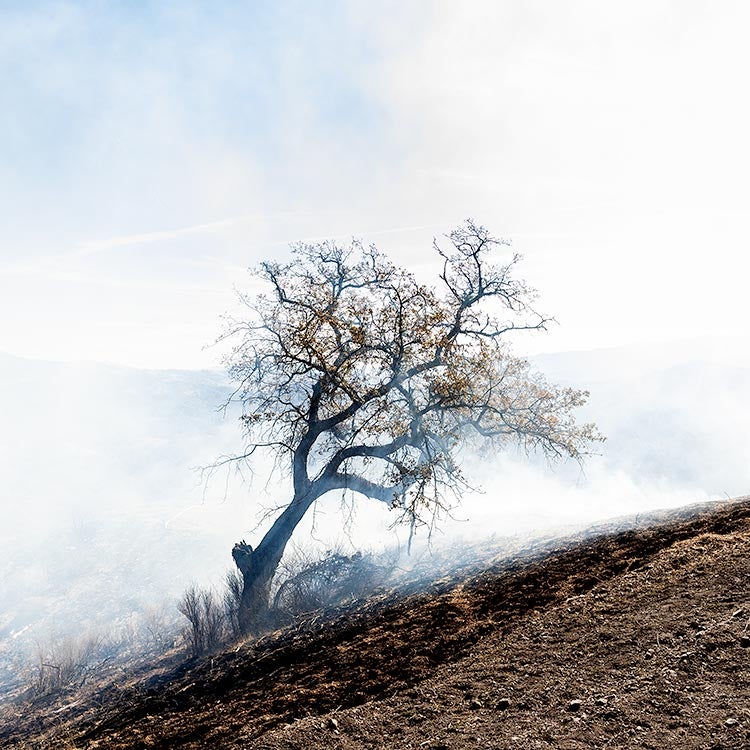
An oak emerges from the clearing smoke. Low intensity fires can open up the understory, sweeping beneath a tree’s canopy without harming it.
Back at Sedgwick…
By early afternoon, a full 20 acres had burned: 12 that morning and another eight two days before. A few fire personnel continued patrolling the area after the flames had died down, stomping out embers and shoveling up smoldering snags.
“Working on these prescribed burns speaks to a deep, ingrained part of our brain,” Childress said: “the part of our brain that stares at campfires for hours and never gets sick of it.”
Now we’re harnessing our fascination with fire for the good of the landscape. Spreading knowledge and awareness among the public will be just as important as spreading fire on the ground. “It’s hard to change generations of culture and belief,” said Burn Boss Dye. “I mean, we all grew up with Smokey the bear. And Smokey said all fire is bad, and all fire must be suppressed.”
Smokey still serves as the avatar of wildfire prevention, but the message he embodies is maturing. In 2001, Smokey’s tagline changed from “Only you can prevent forest fires” to “Only you can prevent wildfires.” The subtle difference reflects the nuances in our growing understanding of fire.
Following the Fire
After five months of heavy winter rains the barren hillside at Sedgwick had transformed into a verdant blanket of grass and wildflowers. A low intensity fire can flash through a landscape, opening it up for different kinds of plants. This patchwork of plant communities creates a variety of habitats, which in turn foster greater biodiversity.
Conservation ecologists have begun using prescribed fires as a restoration tool, including yearly burns around UC Santa Barbara’s lagoon. “Those native plants may not be adapted to fire themselves; they just need an opening,” said Lisa Stratton, director of ecosystem management at UCSB’s Cheadle Center for Biodiversity and Ecological Restoration.
But fire is no panacea. “There are invasive plants, such as mustard, that like fire,” she continued. That’s why the technique requires meticulous planning and management before, during and after the burn.
Prescribed burns are especially helpful for vulnerable wildflowers, which get overgrown by non-native grasses. Adding additional fuel makes for a hotter fire that scorches the invasive grasses and seeds in the soil. This provides a blank slate for replanting with native flora.
The arrival of spring saw a profusion of wildflowers in the Lagoon Island burn area, as well as areas from years past. Red maids, poppies, phacelia, lupines, and more sprouted from the barren earth. The miniature superbloom bedazzled students, faculty and community members strolling about the campus.
Harrison Tasoff
Science Writer
(805) 893-7220
harrisontasoff@ucsb.edu
